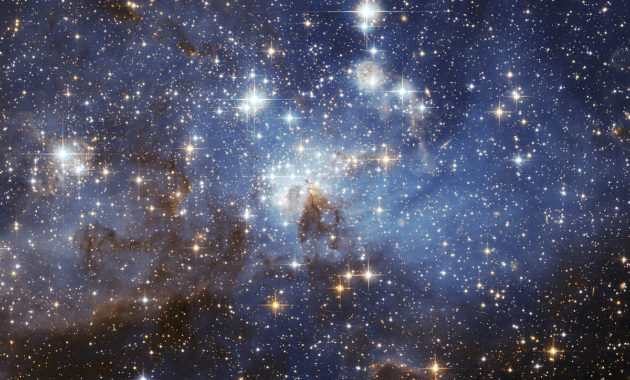The luminous ball that enlightens us during the day is actually a star like all the ones you can see at night in the sky, with the only difference that it is much closer than the others, to be precise 272000 times closer than Proxima of the Centaur which is the closest star of the solar system to 4.3 light-years!
 Like all stars, the Sun is an immense ball of very hot gas whose temperature is about 6000 ° C on the surface but reaches millions of degrees in the heart of the star.
Like all stars, the Sun is an immense ball of very hot gas whose temperature is about 6000 ° C on the surface but reaches millions of degrees in the heart of the star.
Its material consists essentially of incandescent hydrogen mixed with a little helium. The Sun is gaseous on the surface but it becomes rapidly fluid and probably solid at the depth due to the very high pressures that prevail there. But all this is done gradually.
The Sun turns on itself like a sticky balloon. At the equator, for example, the surface of the Sun turns on itself in 25.4 days whereas at the pole its rotation lasts 32 days.
The Sun being a ball of luminous gas, it has no solid surface like the Earth or the Moon. In fact, if you had the means to observe the Sun closely, you would find that the solar surface, the one you draw as a yellow circle, does not exist. Its density is so low that it resembles the void. In reality, you would penetrate the Sun like a thick, but excessively hot fog!
All this gas takes the form of a sphere. In fact, with a mass 330000 times greater than that of the Earth and a diameter 109 times greater than that of the Earth, its force of gravity is so high that it prevents the gas from escaping into space. That is why it forms a sphere. On the surface however, in spite of the high gravity (you weigh 28 times your weight on the Sun, about 1 ton!), The pressure becomes so low that the material can escape into space in the form of protuberances.
So every second the Sun loses several million tons of matter in space, but fortunately for us it has reserves for another 5 billion years!
Since the Sun is immense and contains a great deal of matter, in the nucleus this matter undergoes a colossal pressure and a heat so intense, on the order of 15 millions of degrees (against 6000 ° C only in the center of the Earth) That nuclear reactions similar to those which generate atomic explosions occur! It is the energy released by all these explosions that creates the heat of the Sun.
The Sun also emits particles (protons, electrons) that sometimes disrupt radio communications on Earth or give birth to the aurora. And as we have explained, this radiation containing a lot of energy, after a long exposure, it can cause genetic mutations (and cancers). We can truly say that the Sun influences life on Earth.
The surface of the Sun has dark spots, the number of which varies according to a cycle of about 11 years. These spots represent somewhat colder zones of the solar surface where the matter coming from the depths emerges. Their size is often superior to that of the Earth and they are sometimes so vast that they are visible to the naked eye if you observe the Sun through a filter!

cant download
goblok
suck my balls
sd
a
SO fast and simple
Ok